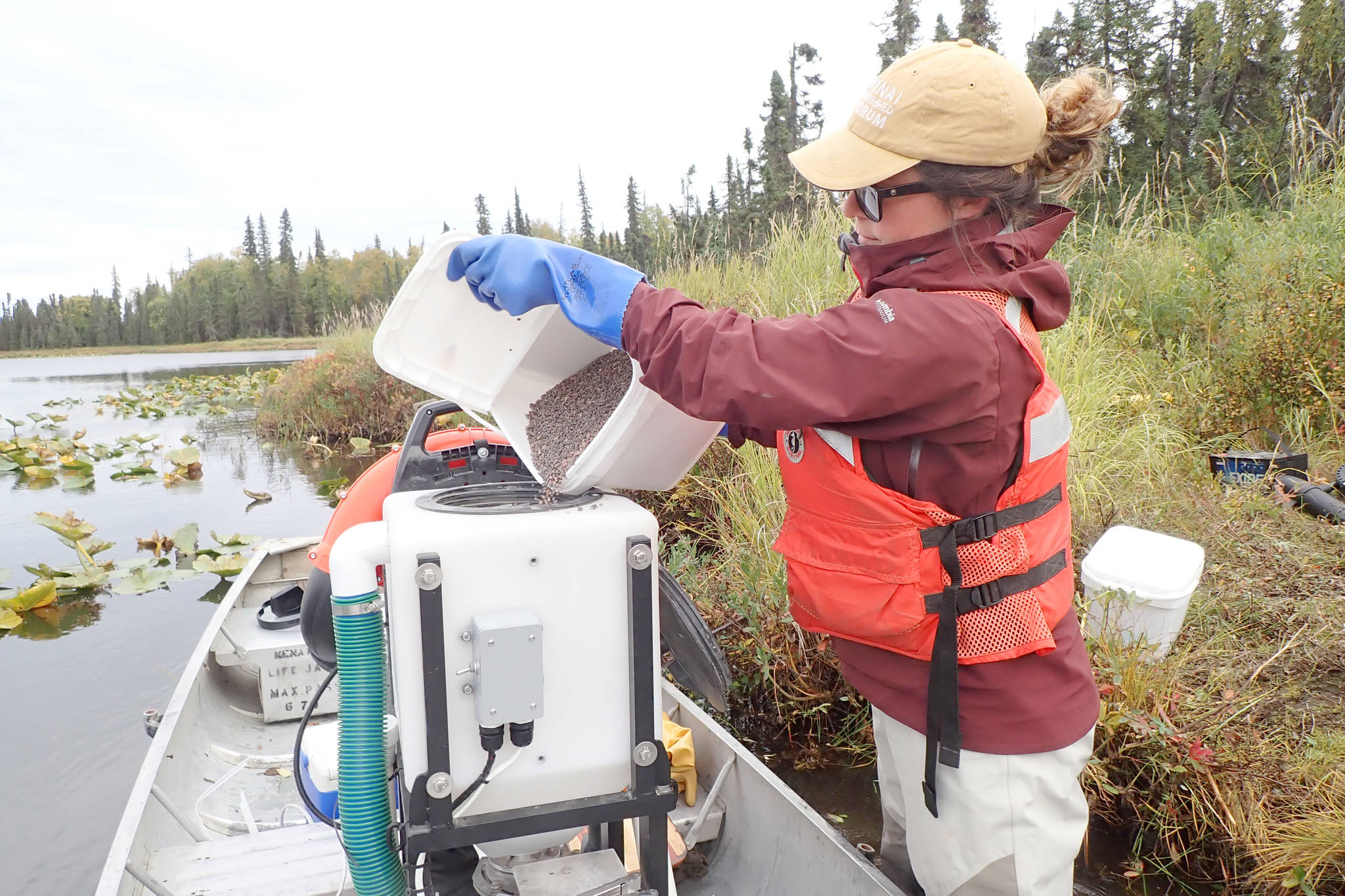When we first found elodea on the Kenai Peninsula seven years ago, partners in the Kenai Peninsula Cooperative Weed Management Area didn’t really have any expectations. At that time, we didn’t know how to kill elodea, the first submersed freshwater invasive plant to establish in Alaska. We only knew we had to try to make it go away.
Elodea in Fairbanks and Cordova had already shown itself as a robust invader, capable of filling Chena Slough and clogging the Eyak Lake spillway.
Based on modeling by Dr. Toby Schwoerer at the UAA Institute of Social and Economic Research, we now know that if elodea were to spread to all suitable habitat in Alaska, it would likely cost the commercial sockeye fishing industry $100 million per year in lost revenue.
So we scrambled and were the first in the state to apply herbicides to treat elodea in 2014. By 2015, we were certain we had killed the three known elodea infestations in Beck, Daniels and Stormy lakes north of Nikiski. We thought we were off the hook.
Then, in 2017, two new lakes with elodea were found on the Kenai Peninsula. The infestation in Hilda-Seppu Lake, just west of Beck Lake, was clearly one we had previously missed. We surveyed this water body in 2013, but just not thoroughly enough to detect this population.
The elodea in Sports Lake, here in Soldotna, was a new infestation, presumably brought in by a contaminated floatplane or motorboat. Lake residents were amazed to see the biomass that had exploded over the winter. Shortly after ice-out in 2017, a windstorm racked up dense piles of elodea strands along the shoreline.
Now, two years later, we breathed a sigh of relief as both of these populations have been successfully dealt with. In fact, we just applied our last treatment of fluridone to Hilda-Seppu Lake last month, bumping fluridone concentrations up to 7 ppb for the winter, but that was just to ensure that elodea really is dead and gone.
But then Rob Massengill, with the Alaska Department of Fish and Game, reported elodea in Sandpiper Lake just south of Point Possession during the same month. Rob was poking around lakes and streams in that area after a credible report that northern pike, another invasive species, was caught in Vogel Lake.
Sandpiper Lake is in the extreme northwest corner of the Kenai Peninsula, only 18 miles from known elodea infestations in Anchorage.
This 70-acre lake is mostly surrounded by the Kenai National Wildlife Refuge, but it intercepts a small parcel owned by the Kenai Peninsula Borough. This lake is listed in the refuge’s aircraft regulations as being open for floatplane access.
Rob surveyed Sandpiper Lake enough to know that elodea is distributed mostly in the northeast quadrant of the lake, suggesting this population was detected early in its invasion.
Sandpiper flows through a peatland to a small 17-acre lake now called North Vogel, and then through another peatland to the 130-plus acre Vogel Lake that has a public use cabin with floatplane access. Vogel Lake dumps into Miller Creek, which flows for four miles (as the crow flies) to the Cook Inlet.
Kenai refuge staff flew into Vogel Lake late last month and surveyed 51 sites in Vogel and North Vogel lakes with no elodea detected.
We are feeling confident that elodea is not present in those two lakes, and we’re gratified that Rob installed two hardwire mesh barriers to intercept pike (and now elodea) between Sandpiper and North Vogel, and North Vogel and Vogel. We inspected both barriers and did not find elodea trapped in either.
We are working with the Alaska Division of Agriculture and Kenai Peninsula Borough to plan for treating Sandpiper Lake early in the spring, shortly after ice-out.
Because this portion of the Kenai refuge is within congressionally designated wilderness, refuge staff will work through a Minimum Requirements Analysis to ensure that herbicides are the appropriate tool.
SePro Corporation, maker of the fluridone products we use, is developing an herbicide prescription based on the lake’s bathymetry, but I expect the cost to be around $40,000.
Our tally is now six known infestations on the Kenai Peninsula, five of which have been eradicated.
Elsewhere in Southcentral Alaska, I was impressed to hear recently that Dan Coleman (Division of Agriculture) has applied the first round of fluridone to Jewell Lake, is completing treatment of Survival Creek (Potter Marsh), and has applied diquat to Sucker and Alexander lakes in the Matanuska-Susitna valleys.
While I’m sure there are undetected infestations out there, it is reassuring that all known infestations in Southcentral Alaska have either been eradicated or are under chemical treatment (except for Sandpiper Lake).
For the first time in five years, we may be getting ahead of the curve in addressing elodea regionally. My expectations of success are changing for the better.
Dr. John Morton is supervisory biologist at Kenai National Wildlife Refuge. Find more Refuge Notebook articles (1999–present) at https://www.fws.gov/refuge/Kenai/community/refuge_notebook.html.

